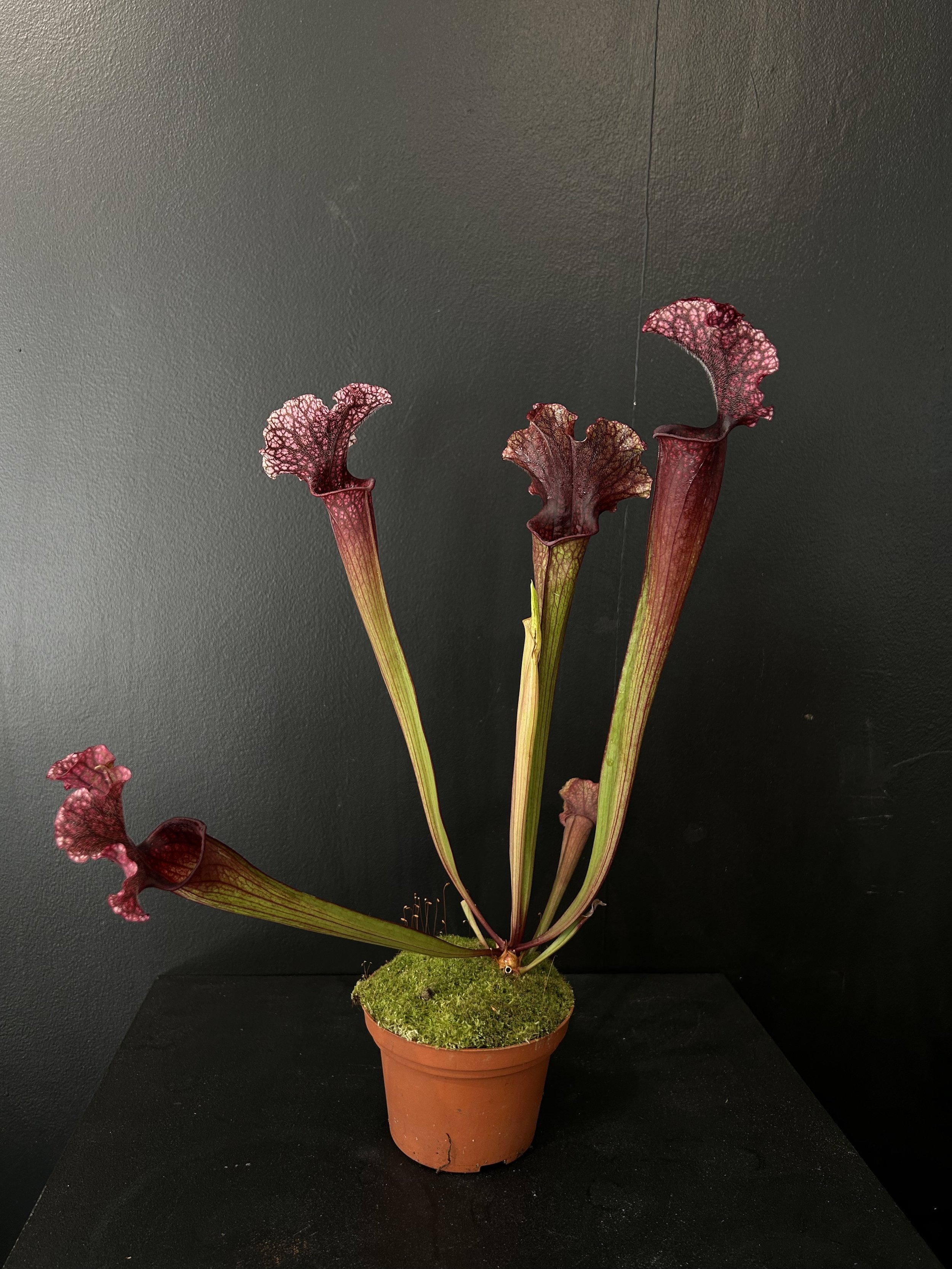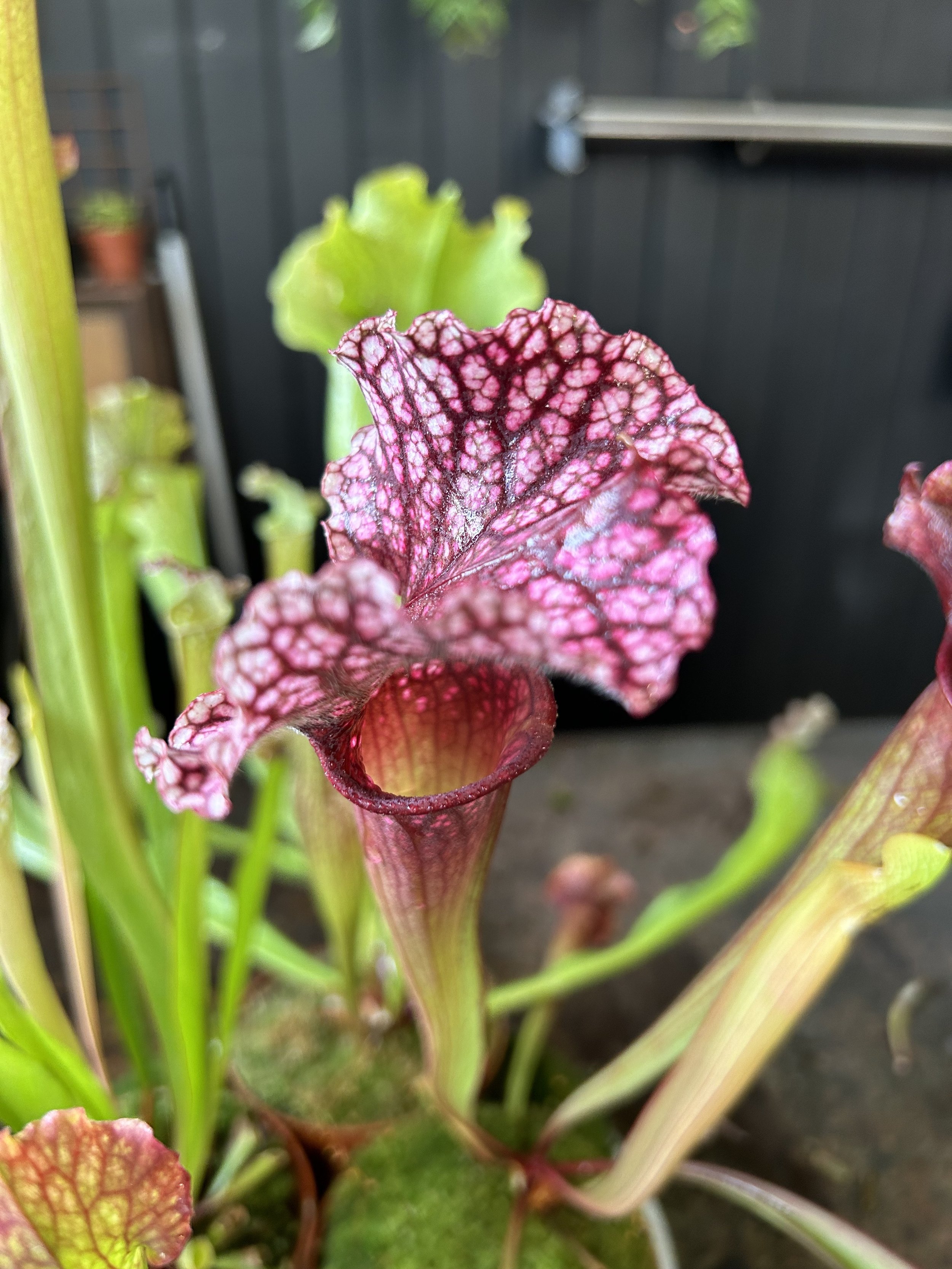Plant Profile
Trumpet Pitchers
a.k.a. Sarracenia
Originating from North America, the carnivorous Sarracenia is an absolute gem of a plant and a great way to control flies inside the home. The insects will be attracted to the colourful vein pattern and colour of the ‘Trumpets’ and the nectar around the lip, and then inevitably fall into the pitcher, which should have a small pool of water inside. The bugs are then digested by the plant, providing it with all the nutrients it needs. Of all the carnivorous plants we stock, this is probably the easiest to grow and maintain, just pay close attention to its specific needs below.
Top Tips
✔ Don’t hand feed flies to your plants.
✔ Never let your pitcher plant dry out.
✔ Plant will go dormant in the winter, so when growth has stopped and the existing leaves have died completely (November / December) you should move your plant to a cool location for the Winter. Keep the soil just damp during this period and ensure there is ventilation to reduce the chances of rot or fungus attacks.
✔ In early spring new growth will start to appear. Cut off all the tatty growth from the previous year and slowly bring it back to where it was growing prior to the rest.
✔ Water with rain water when possible! It’s more acidic and your pitcher plant will thrive with this.
Plant Care
-
This plant LOVES the sun, so much so that for it to really thrive and grow it needs full, direct light. A South facing window is perfect for these pitcher plants.
-
The native home for these plants are bogs or marshes which are constantly damp and wet, so to replicate these conditions you need to keep your Trumpet Pitcher’s well watered during the growing season (april - Sept) - you can even allow your plant to sit in a shallow dish of water - basically don’t let the soil dry out at all!
Rainwater is preferred for these plants because of its acidity, but when rainwater isn’t available, distilled tap water is a good alternative (boiling tap water in a kettle, and allowing to cool). Try and avoid chemically softened water.
In the Autumn/ Winter months, the plant will go dormant and you can reduce watering to prevent the rhizome rotting.
-
If your home is particularly dry, you can increase humidity by misting your plant or positioning on a pebble tray.
-
No need to fertilise your Trumpet Pitcher - they will get their nutrients from the flies they catch. If you feel your plants aren’t catching enough insects in your home, you can move them outside for a week or two during the summer.
-
During growing season, Sarracenia’s like it warm to hot and in Winter they like it cold. Really cold. Unlike almost every other houseplants they'll happily take mild frosts when dormant.
-
Pitcher Plants are non-toxic to cats, dogs and people.
-
You can propagate your pitcher plant by separation.
Split a mature rhizome in half Making sure each split of the rhizome has a few new leaves forming and some roots to give the plant a good start.
-
Repot your pitcher plant yearly to refresh the growing medium and remove any build up of minerals that have occurred over time.
A good medium to use is a mix of coco coir, sand and peat moss. Go up a pot size only when plant has really outgrown its pot.



Quick plant check up
Crispy leaves or pitchers
Likely that the soil has been allowed to dry out to much during the plant’s growing season. Make sure it is in constantly wet soil, or even a shallow dish of water in the growing months.
Pitchers are fading in colour
This is usually a sign the plant is not getting enough light. Position in a south facing window to ensure it gets as much light as possible!
Plant isn’t producing pitchers
If this is during growing season, it’s likely the plant isn’t getting enough light. Reposition to a brighter spot. If it’s during winter period, this is quite normal as the plant enters dormanc



